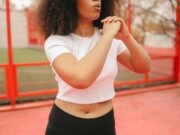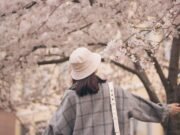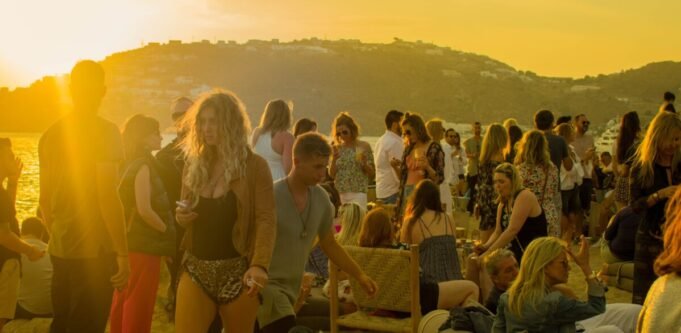Urban fashion festivals and fashion events in cities are on the rise, reflecting the growing popularity of streetwear culture and urban fashion trends among millennials and Gen Z. These unique festivals celebrate street style and provide a platform for showcasing the latest urban fashion. As contemporary streetwear continues permeating mainstream fashion, urban fashion festivals are poised to grow even bigger.
Over the past decade, urban fashion festivals and events have been steadily gaining prominence worldwide. From massive festivals attracting over 100,000 attendees to intimate gatherings of streetwear enthusiasts, these events highlight the dynamism of urban fashion culture. For millennials and Gen Z, in particular, urban fashion festivals provide an experiential celebration of streetwear trends and community. The meteoric rise of these festivals underscores streetwear’s evolution from niche subcultures to a global mainstream phenomenon.
The Rise of Streetwear Culture
Streetwear refers to casual fashion inspired by urban subcultures like hip-hop, skateboarding, graffiti, and surfing. Key elements of classic streetwear style include graphic t-shirts, hoodies, sneakers, baseball caps, and oversized jeans. While streetwear first emerged in the 1970s and 80s through niche subcultures, it has since exploded into one of the most powerful forces shaping mainstream fashion today.
Influential figures like Nigo of A Bathing Ape and Shawn Stussy helped pioneer the early streetwear scene. However, it was not until the 1990s and 2000s that streetwear gained more mass appeal. The global rise of hip-hop and skateboarding culture during this period thrust streetwear into the limelight. Rappers, skaters, and other youth subcultures embraced streetwear brands like Supreme, Stüssy, and Freshjive as part of their self-expression.
The advent of social media and influencer marketing in the 2010s further popularized streetwear worldwide. Instagram and YouTube enabled direct engagement between streetwear brands and consumers. Meanwhile, high-profile collaborations with celebrities gave streetwear heightened visibility. As iconic brands like Supreme gained cult followings, terms like “hypebeast” entered the mainstream lexicon.
Today, streetwear is no longer a fringe movement but a major force in the $2.4 trillion global fashion industry. Established luxury brands are increasingly incorporating streetwear elements into their collections to attract younger demographics. The rise of athleisure has also blurred the lines between sportswear and street style. This reflects how thoroughly streetwear has permeated contemporary fashion.
Fashion Festivals as a Celebration of Urban Fashion
Mirroring streetwear’s growth into the mainstream, urban fashion festivals and events have emerged as experiential platforms for brands and enthusiasts to celebrate street style. These festivals enable attendees to directly engage with the latest streetwear trends through immersive activations.
One of the largest and most influential urban fashion festivals globally is ComplexCon. Launched in 2016 by media platform Complex, ComplexCon draws over 100,000 attendees annually to its massive conventions in Long Beach and Chicago. The event encompasses runway shows, panel discussions, exclusive product drops, art installations, and live music performances. Top streetwear brands like BAPE, Kith, and Stüssy leverage ComplexCon to debut new collections and limited-edition collaborations.
Beyond ComplexCon, dozens of other notable urban fashion festivals exist worldwide. Sole DXB in Dubai and Hypefest in Singapore have become premier streetwear events in their respective regions. In Berlin, Reference Festival blends fashion, music, and art for a uniquely avant-garde experience. Relative newcomer Rose in the Air Festival held its inaugural event in Brooklyn in 2022, attracting over 5000 attendees.
These festivals all share common threads of celebrating streetwear culture through experiential activations. However, each event also delivers a unique flavor reflecting the city and community it represents. For instance, Afropunk Festival in Brooklyn incorporates live music, art, and activism to highlight African-American culture. As streetwear continues going mainstream, the festival scene will likely expand to reflect this diversity.
The Appeal of Urban Fashion Festivals for Millennials and Gen Z
For millennials and Gen Z, urban fashion festivals hold significant appeal as events that authentically represent their interests and values. More than just shopping destinations, these festivals foster an energizing sense of community rooted in streetwear and youth culture.
Millennials came of age during streetwear’s rise in the 1990s and 2000s, shaping their lifelong affinity for street style. For Gen Z, streetwear represents the norm rather than a subculture. Events like ComplexCon and Sole DXB allow these generations to celebrate their passion for street fashion while connecting with like-minded enthusiasts.
Urban fashion festivals also enable self-expression for young attendees through flexing their latest streetwear cops. Festivals are opportunities to stunt pieces from coveted brands and show individual style. For instance, rare Supreme box logo hoodies are a ubiquitous sight at ComplexCon. Social media expands this self-expression beyond physical attendance, as fans share #OOTD (outfit of the day) posts from festivals.
Additionally, the festival environment fosters a sense of FOMO (fear of missing out) that creates buzz on social platforms. From exclusive merch drops to surprise guest appearances, festivals are designed for Instagrammable moments. For youth generations immersed in social media, this amplifies the appeal of attending highly shareable events like ComplexCon.
The Future of Urban Fashion Festivals and Events
As streetwear continues permeating the mainstream fashion landscape, urban fashion festivals are poised for enormous growth and expansion. The incredible rise of ComplexCon demonstrates the potential scale of these events. Additionally, increasing hybridization between physical events and digital experiences will shape their future evolution.
ComplexCon itself is evolving into a year-round experience through regular digital content and its ComplexLand virtual metaverse. Other festivals are leveraging livestreams to engage remote audiences. For example, Hypefest created a digital “Hypeverse” for users to explore the festival virtually. As metaverse technology matures, hybrid physical-virtual events will likely become more commonplace.
Meanwhile, the geographic footprint of urban fashion festivals will continue spreading to new regions. Countries like China and Nigeria are primed to host major streetwear festivals catering to their youth demographics. Similarly, smaller local events like Rose in the Air Festival will emerge to celebrate unique city scenes. Rather than competing, these events will coexist as a worldwide circuit representing the diversity of global street culture.
This potential for growth underscores urban fashion festivals’ significance as platforms where brands can engage new generations of consumers. For millennials and Gen Z driving streetwear’s popularity, these experiential events hold an enduring appeal. As streetwear culture continues evolving, so too will the festival scene that authentically embodies the lifestyle for these youth generations.
Conclusion
The meteoric rise of urban streetwear has given birth to a thriving festival scene that enables brands and enthusiasts to celebrate these dynamic fashion trends. Events like ComplexCon and Sole DXB have become cultural touchpoints where millennials and Gen Z can immerse themselves in street fashion culture. With streetwear’s popularity showing no signs of slowing down, urban fashion festivals are poised to grow even bigger and continue shaping youth fashion experiences. These festivals ultimately reflect how streetwear has developed from niche subcultures into a global mainstream phenomenon.



































